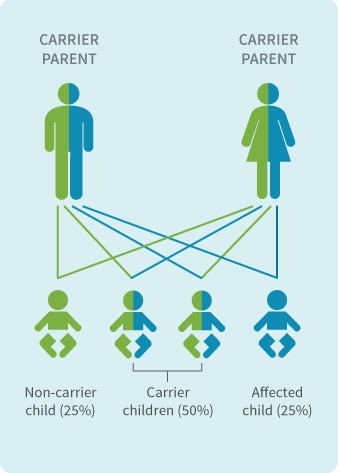Types of DNA Testing
There are multiple types of DNA tests. The three most common are Y-DNA testing, autosomal DNA testing, and mitochondrial DNA testing,(mtDNA testing).

To understand the differences between these tests, it can help to know how DNA is organized. Human DNA mostly comes in long stretches called chromosomes and each person typically has 23 pairs, for a total of 46 chromosomes.
Y-DNA tests look at one of the chromosomes in the 23rd pair, the Y chromosome. Autosomal DNA tests measure 22 pairs of chromosomes called the autosomes. And, mtDNA tests consider a tiny snippet of DNA stored in a completely different place in the cell, the mitochondria.
AncestryDNA uses autosomal DNA testing to provide insight into where your ancestors might have lived 500 to 1000 or more years ago, as well as your family history running back through generations. However, there are specific uses for each type of genetic test. Here's what you need to know about each in order to best compare DNA tests.
What is Y-DNA Testing?
Y-DNA testing can be used by people with a Y chromosome to research their 'patrilineal' ancestry—their ancestry through their male line. But not everyone has a Y chromosome. Only around half the population, typically biological males, have one. Because of this, Y-DNA testing is only available to around half the population (although someone lacking a Y chromosome can have a family member with a Y chromosome tested).
The Y chromosome is passed directly from a person's biological father, who inherited it from his biological father, and so on. This makes the Y chromosome useful for tracing back your biological father's male line. It also provides supporting evidence that someone is related to you.
The primary strength of a Y-DNA test though is that it can trace your biological dad's male line far back into time—thousands or even tens of thousands of years ago. This is possible because the Y chromosome is passed down with very few changes, generation after generation. The downside is that you can only trace a sliver of your heritage back so far.
What is Mitochondrial DNA Testing?
Mitochondrial DNA testing (mtDNA testing) traces a person's matrilineal (mother's female) ancestry using the DNA in his or her mitochondria.
Mitochondria, the powerhouses of the cell, are passed down from your biological mother's egg—your biological father shared none of his mitochondria with you. That's why you can only trace your biological mom's female line using mtDNA testing. And unlike a Y-DNA test, everyone can take a mtDNA test.
However, like a Y-DNA test, a mtDNA test can only trace a sliver of your family tree back in time and it can really only provide supporting evidence that someone is related to you. It also can be traced back in time thousands or even tens of thousands of years.
What is Autosomal DNA Testing?
Unlike mitochondrial DNA testing and Y-DNA testing, autosomal DNA testing analyzes most of your DNA that comes from your parents—the 22 pairs of chromosomes that make up your autosomes. The information in these chromosomes can help find recent and distant relatives, as well as find where your ancestors lived 500 to 1000 or more years ago. Autosomal DNA testing is much more information-rich than either Y-DNA or mtDNA tests since it can reveal more about your ethnicity and who you are related to.
Ancestry's autosomal DNA testing evaluates your genetic code at about 700,000 different locations, or markers, across your autosomal chromosomes, focusing on locations that differ between families and ethnic groups. This information can help you identify which of the more than 350 regions across the globe your ancestors may have lived in.